Not many people know that special lamps are needed not only for growing plants in indoor conditions, but also for the normal growth and development of many indoor plants. If you want your green pets to be healthy both in winter and summer, then it’s time to think about buying a plant growth lamp, and our article will tell you how to choose one.
Which lamps are best for plants?
The normal development of any plant directly depends on the amount of sunlight it receives. Therefore, in winter, in conditions of short daylight hours, it is so important to provide indoor plants with sufficient light conditions, especially if we're talking about about exotic plants.
Incandescent lamps
It would seem that there is nothing simpler - buy a sufficient number of ordinary light bulbs and do not turn them off day or night. But the fact is that plants need not just light, but rays of a certain part of the spectrum - blue and red, which a regular incandescent light bulb cannot provide. In addition, during operation, incandescent lamps get very hot, which also does not have the best effect on plants.
Fluorescent lamps
Compared to incandescent lamps, fluorescent lamps have a number of undeniable advantages- they have higher light output, they heat up less during operation and consume less energy. When choosing a fluorescent lamp to illuminate plants, you need to pay attention to the labeling - it should contain the letters LD or LDTs, indicating the presence of blue rays in the lamp's radiation, which are so important for the process of photosynthesis.
Energy-saving lamps
Energy-saving, or as they are also called “economical,” lamps are also suitable for plants. At the same time, they are produced in a wide range, which allows you to choose an economical light bulb of the spectrum required for a given phase of plant development. Such lamps have excellent power consumption and long term work, and at the same time they hardly heat up. During the active growth phase, plants will need energy-saving lamps marked 6400-4200 k blue, and in the phase of flowering, laying and ripening of fruits - 2700-2500 k red.
Gas discharge lamps
Gas discharge lamps remain the most intense light source today. They are simply irreplaceable if the task is to at the lowest cost illuminate a fairly large space. But they also have quite serious disadvantages, in particular, they require the use of special ballasts.
Three types of gas-discharge lamps are used in crop production:
- sodium;
- mercury;
- metal halide or metal halide.
Melal-halide lamps are the best of all gas-discharge lamps in coping with the tasks of supplementary illumination of plants grown under artificial conditions: they produce radiation in the required part of the spectrum and high power, last a long time and are relatively easy to operate. But at the same time, such light bulbs are quite expensive.
The latest developments in LED technology make it possible to organize artificial lighting that meets all necessary requirements. In one you can install several LEDs of different spectrums, completely covering all needs  plants. In addition, LEDs consume a minimum of electricity, do not heat up during operation and do not require additional devices for operation.
plants. In addition, LEDs consume a minimum of electricity, do not heat up during operation and do not require additional devices for operation.
Aquarium lamps for plant growth
Aquarium lights can also be used to grow indoor plants. They produce radiation in the required parts of the spectrum, heat up little during operation and have good electrical characteristics. But aquarium lamps have a significant drawback - they are quite expensive, so it makes no sense to buy them specifically for illuminating indoor plants.
IN winter time, when sunlight becomes less and less every day, plants feel an acute lack of it. Gardeners involved in growing seedlings and breeding rare varieties of flowers are concerned about extending the photoperiod for growing crops. Using a regular room lamp is not considered by them as good option.
How to choose a lamp for plants
The design of LED lamps consists of LED matrices. When choosing such a device, you need to know that not all can be used as an additional light source for plants. It is necessary to pay attention to such a basic parameter - the range of the spectrum of electromagnetic radiation (wavelength). A person perceives individual waves as a colored stream; he sees them together as White light. Best used for plant growth diode lamp with a wavelength of about 430-455 nm (it will produce blue light). Flowering plants need the red spectrum (660 nm).
LED phytolamps for plants
LED plant lights are used in apartments for decorative flowers, in rooms where seedlings are grown indoors. For the second case, you will need more lamps, because the lighting should be above each row of plants. This allows you to replace natural light with artificial light, create comfortable conditions in the greenhouse. Gardeners also enjoy using LED lamps to illuminate plants in the garden, affecting active growth, flowering, and fruit formation.
Advantages

Such popular LED lamps for plants today have many advantages over gas-discharge, fluorescent, and incandescent lamps. They are very profitable, have impressive characteristics, and therefore attract professional gardeners and gardeners. It’s hard to imagine better light conditions than an LED phytolamp can create. The main and undeniable advantages of devices (ice) include:
- Durability. The service life of a phyto-lamp can be up to 50 thousand hours, which is just over 11 years of sixteen hour work a day. Incandescent lamps (for comparison) can last about 1 thousand hours. This proves that the phytolamp for plants is simply created for long-term operation.
- Energy efficiency and energy saving. Practice shows that energy savings compared to gas-discharge lamps reach 80%. A 480-watt artificial lighting system is similar in efficiency to a 700-watt one. A gas-discharge lamp will be brighter (due to power), but plants do not absorb even 70% of its radiation. The spectrum of light, which is responsible for performance, is much more important.
- Easy to use. LED lamps for plants do not require any additional equipment(reflectors, protective glasses, special cartridges). With their help you can grow flowers, fruits, and vegetables. Customer reviews are mostly positive.
- Safety. LED lamps are harmless to plants and people caring for them. They practically do not heat up, so they do not dry out young green leaves. You can install the lamps at a distance of 25-30 cm. Even such a close arrangement does not require constant ventilation; LEDs do not affect the temperature in the room.
- Environmental friendliness. LED lamps for plants do not emit harmful substances, do not contain mercury. Suitable for use at home (in an apartment, on a balcony, etc.)
Flaws

Looking at all these advantages of LED lamps, some people mentally wonder: what's the catch? I would like it to be absent, but there is a drawback. For some, it predetermines their choice and forces them to refuse a purchase. This significant disadvantage is the high price. Few amateur gardeners or simple flower aficionados are willing to pay from 200 to 1500 dollars for such a miracle. More often, LED lamps for lighting plants are beneficial in professional field growing flowers or vegetables.
Illumination of plants with LEDs
The process of photosynthesis is significantly influenced not only by spectral exposure (blue or red light), the light regime is also important. It lies in the regular change of “day” and “night” for plants. With its help, it is possible to regulate the stages of flowering and vegetation by simply changing the duration of exposure to light and darkness. There are neutral types of flowers; for example, the light regime does not affect the development stage of a rose in any way. Before you start growing any crop, you need to find out the preferences and rules for maintaining your future plantings.

Lamps for seedlings
Seedlings are small, immature sprouts that require special care. LEDs for plants are ideal for its cultivation. They are able to make conditions comfortable thanks to a constant temperature and the necessary radiation spectra at this stage of development. Daylight (from fluorescent lamps) does not have the same effect. It is recommended to install ice lamps directly above the seedlings, because the light flux here is directed strictly downward and does not scatter. This will not harm the plantings; even contact with the surface of the lamp will not cause a burn to the leaf.
Greenhouse lighting
LED lightening greenhouses are used more often every year. No other lamps can give the same effect (you can see it in the performance). The LED strip for plants has an adhesive surface and can be attached to any installation. It is durable, does not contain gas, and is therefore not explosive. Greenhouses are very humid, so it is worth taking care to properly protect the tape. Otherwise, it may fail. Experts say that modular systems much more effective. In their opinion, ribbons perform a more decorative function.
Video: DIY LED plant lamp
Each of us has in our home houseplants, which help add a piece of comfort to our interior.
Available for sale today whole line various types of living plants. They differ in their shape and size. Each species requires certain conditions of detention.
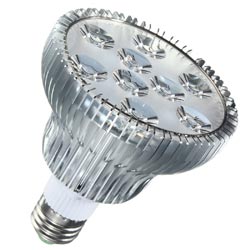
Some need a large number of light, for others, on the contrary, minimal.
Insufficient lighting can lead to premature death cultural species. Alternative solution this problem, there will be additional lighting for indoor flowers.
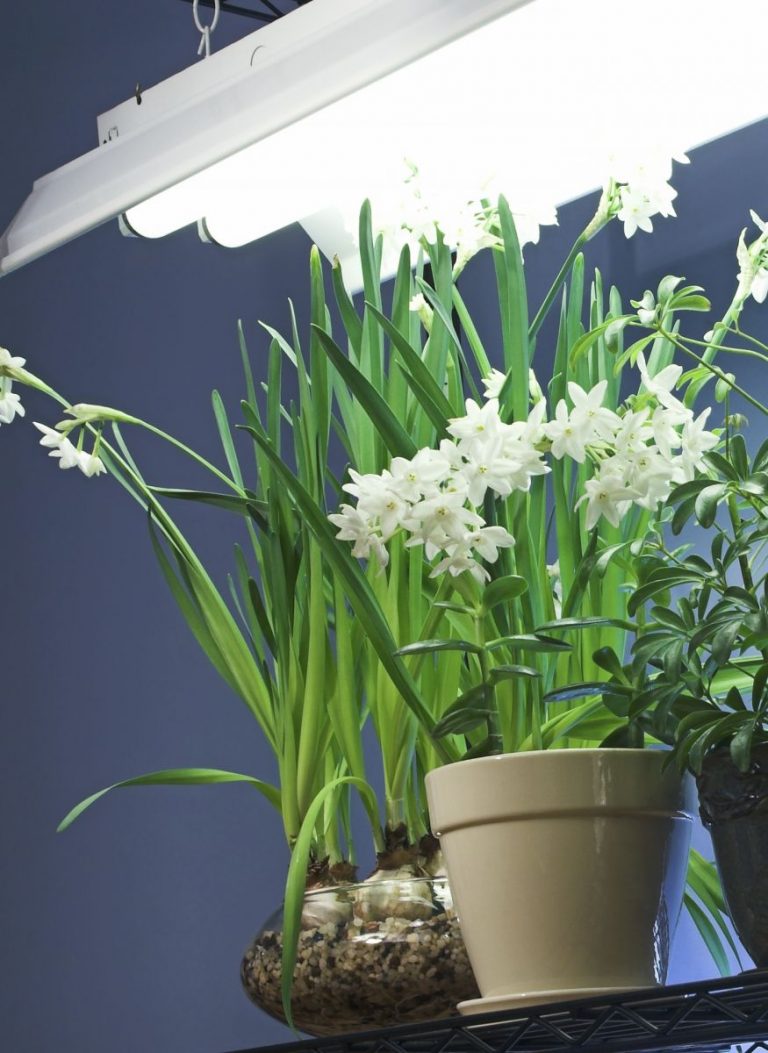
It should be noted that the lighting process should not be too intense. It is important to consider its normal flow here.
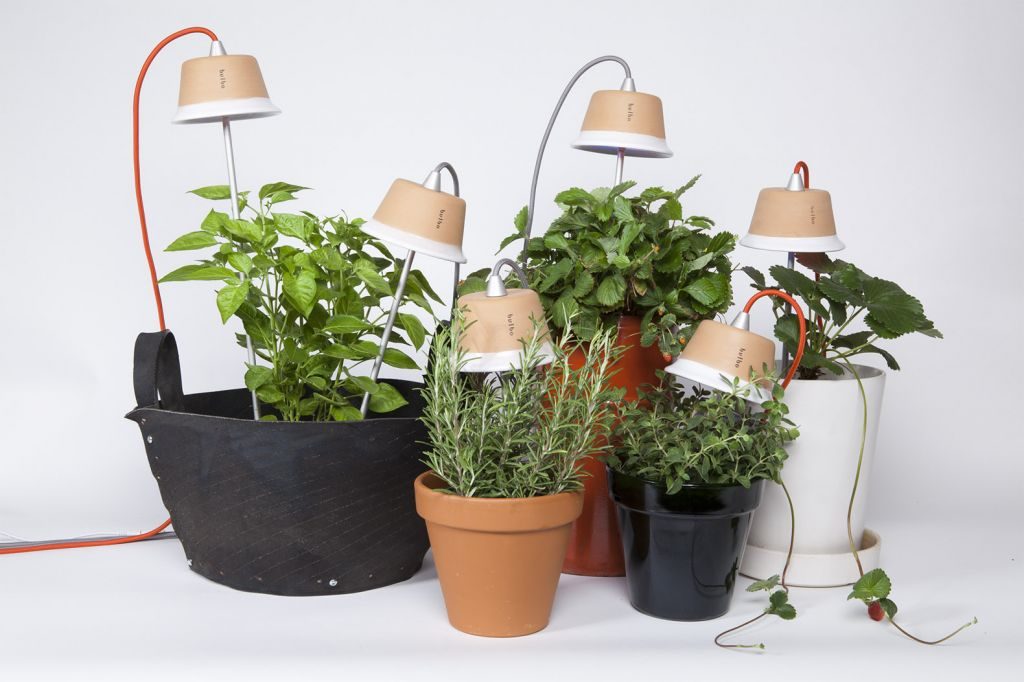
Main signs of insufficient lighting
With insufficient sunlight, the plant quickly begins to change its appearance. The leaves become less saturated in color, and sometimes simply begin to crumble. In some cases, it is possible that round spots may appear on the surface of the leaf plate.
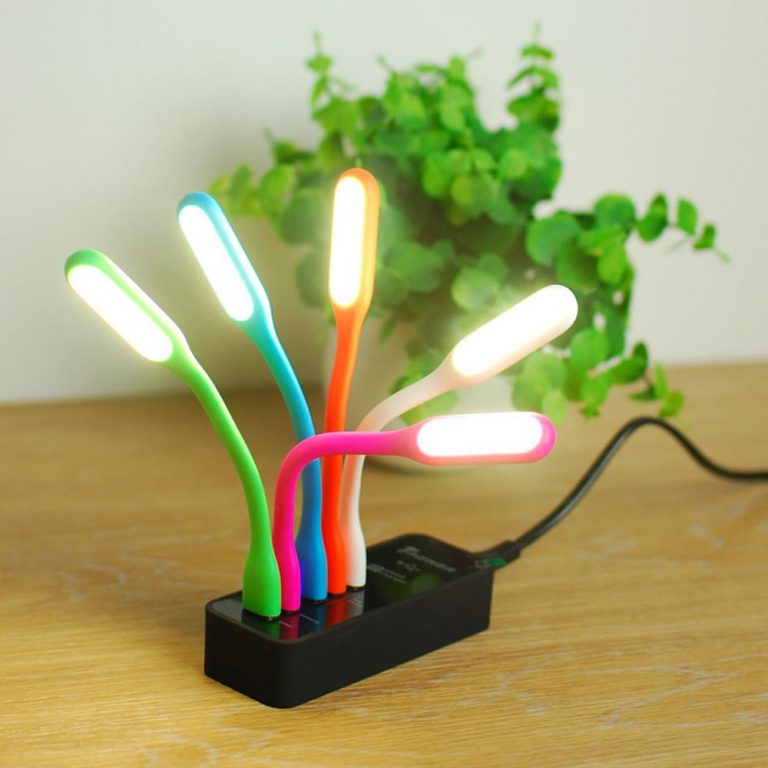
The flower noticeably increases in height. The stem becomes thin and lifeless.

If one of these symptoms is detected, it is necessary to change its location on the window opening.

To quickly restore the plant, you can install an additional light source. How to decorate lighting for indoor plants? Everything is quite simple.
For this you will need:
- LED Strip Light;
- table or standing lamp designed for indoor plants.

To normalize the life processes of plants, there are special types of lamp lighting.

For each type, it is necessary to select appropriate intensity artificial radiation. The photo of indoor flower lighting shows a variety of designs.
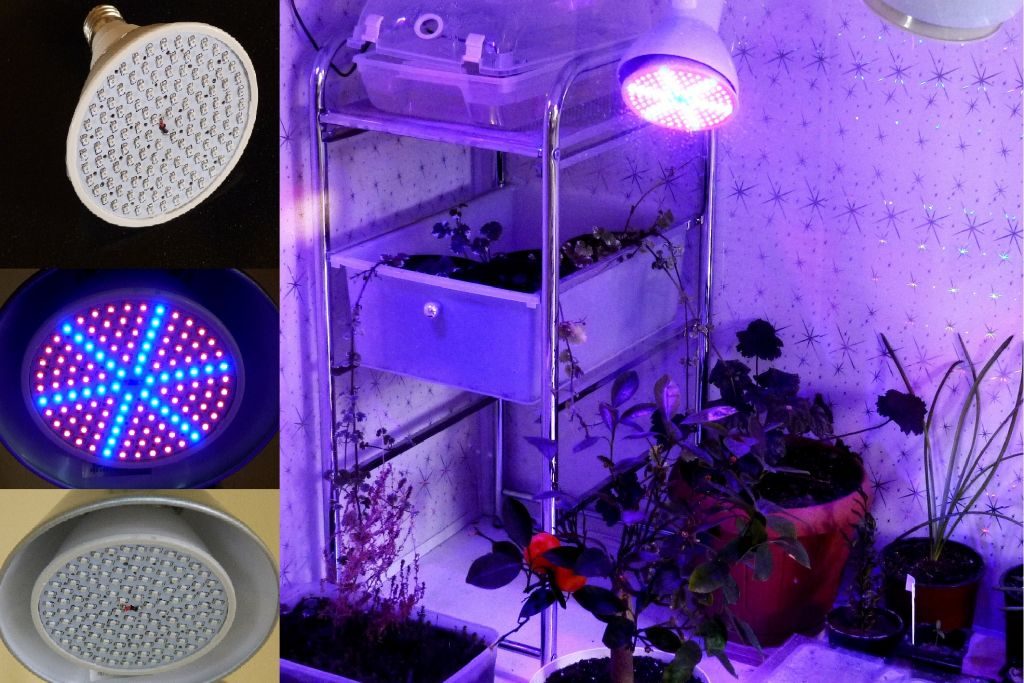
Tropical species require more powerful devices. As for indoor violets and orchids, then a small flow of lighting is enough for them. Such devices have several simulation modes solar radiation.
How to choose?
The main thing in this matter is to choose the most suitable intensity of light rays for most species.

In specialized departments, there is a huge selection of LED strips with changing light beams. Here the maximum imitation of solar radiation is created. The operation of such a lamp can take quite a long period of time.
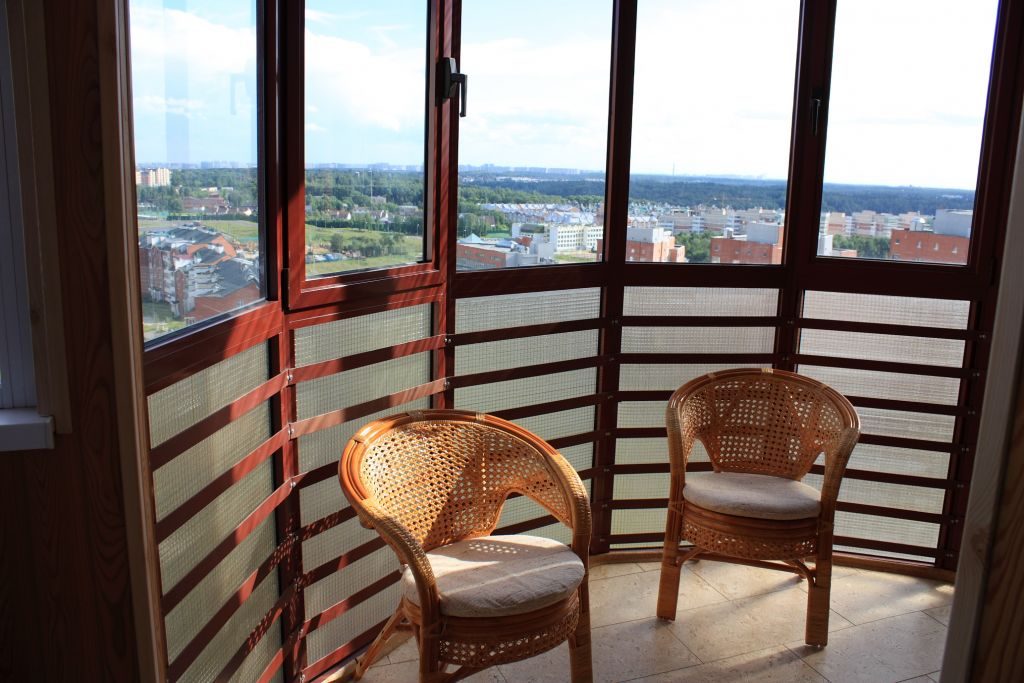

If such a backlight malfunctions, the inoperative element can be easily replaced. This applies to both the whole segment and its individual parts. The LED strip is tightly fixed to any surface.
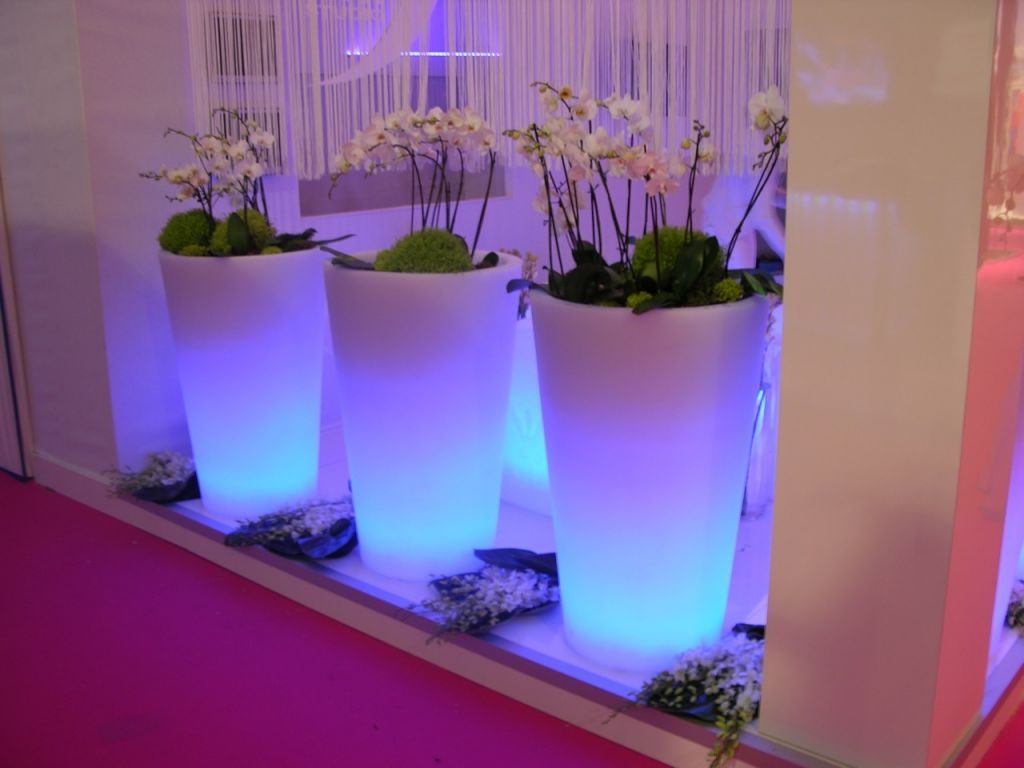
To save electrical energy, fluorescent lamps were developed. They have minimal weight and simple design.

An incandescent lamp is also suitable for lighting indoor plants. The only drawback of such a device is its excessive energy consumption.
The most budget option is still an LED strip or table lamp With energy saving light bulb. These types of designs are able to maintain optimal light supply in the dark.
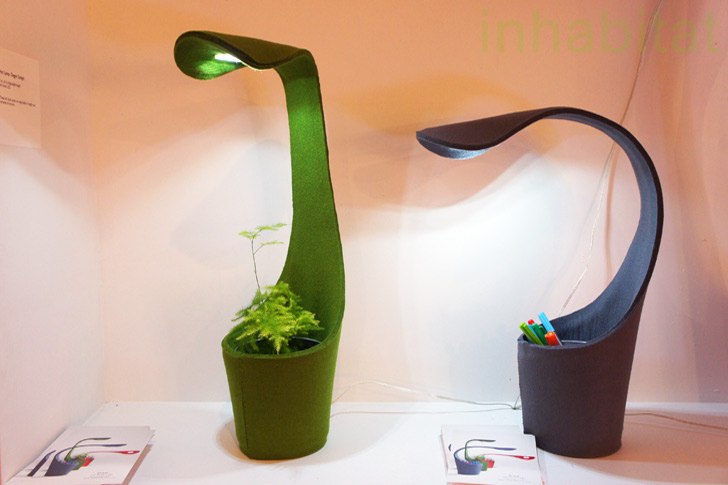
Installation
In the process of creating an artificial light source, you need to think about its location. Incorrect supply of light rays can cause serious problems for indoor plants.
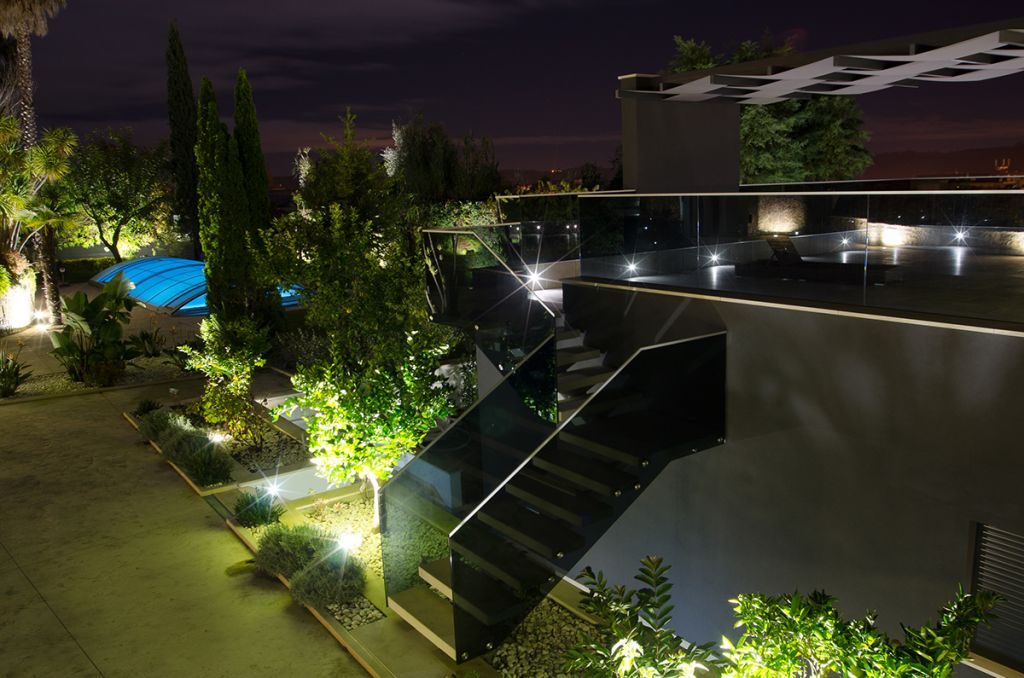

When mounting or installing the device, it is recommended to take into account maximum distance from pot to lamp. In this case, you can stick to 30 cm.
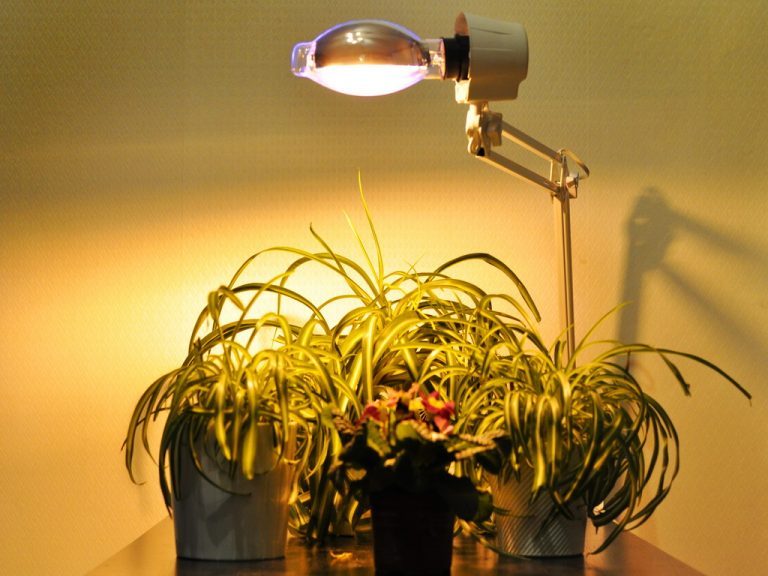
If burns or light spots begin to appear on the surface of the leaves, it is necessary to increase the light distance. Uniform dispersion, helps indoor flowers maintain a beautiful appearance.
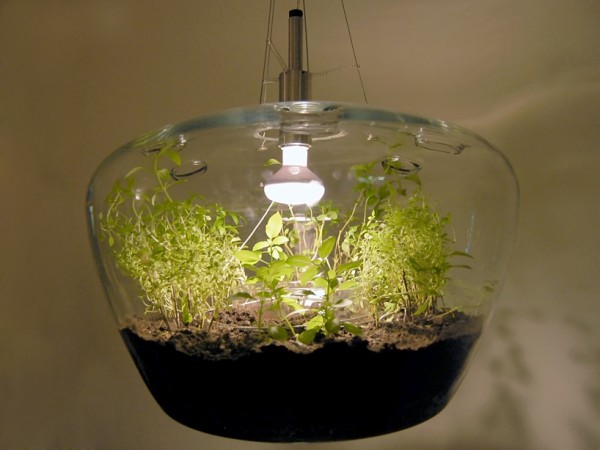
Photo of lighting for indoor flowers

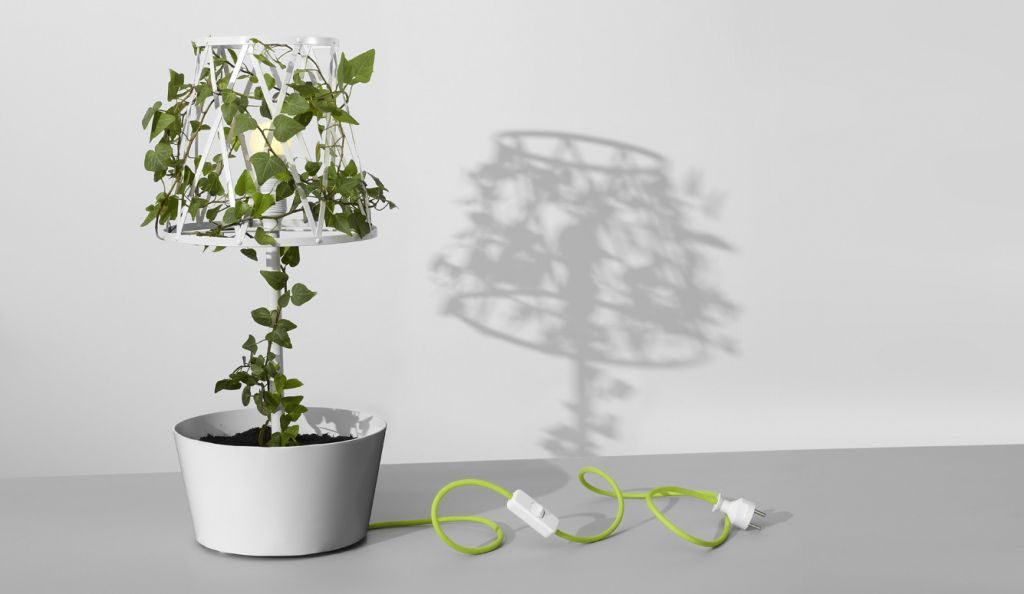



![]()

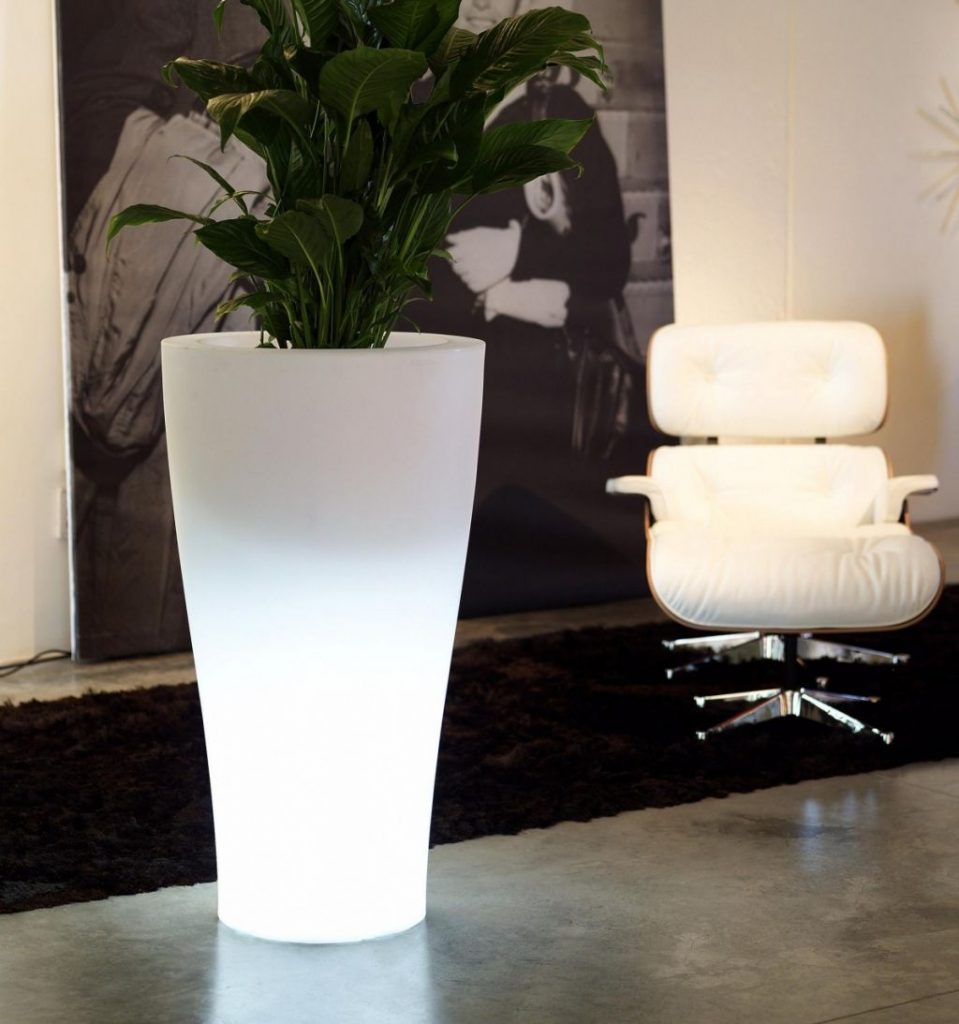
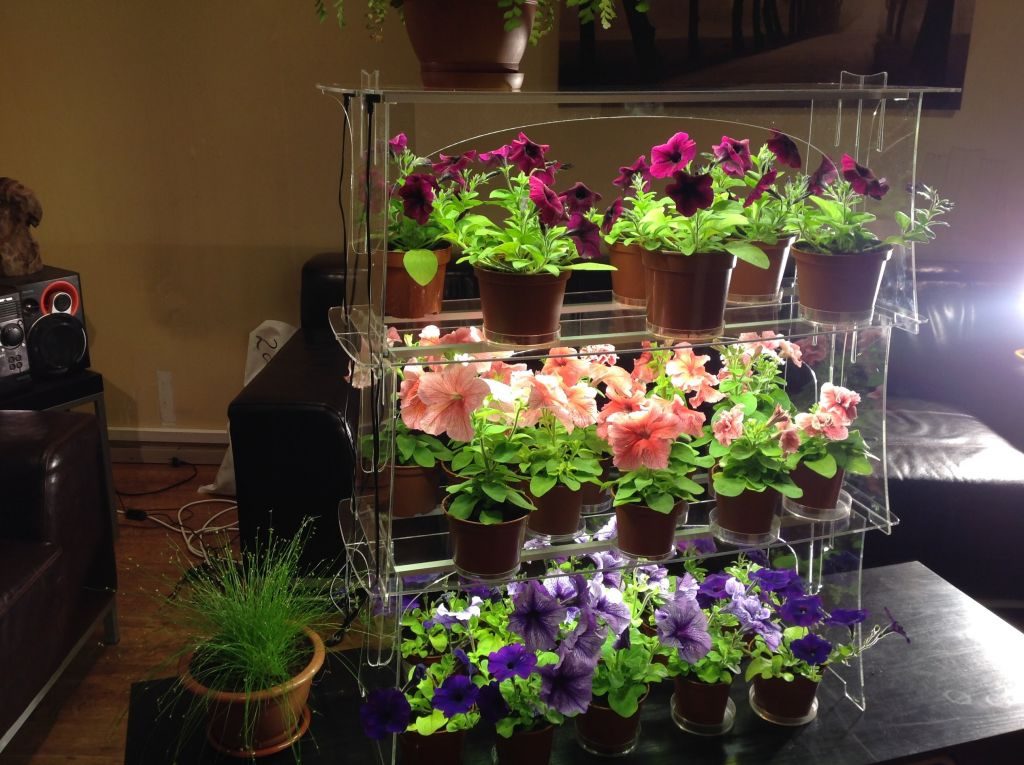


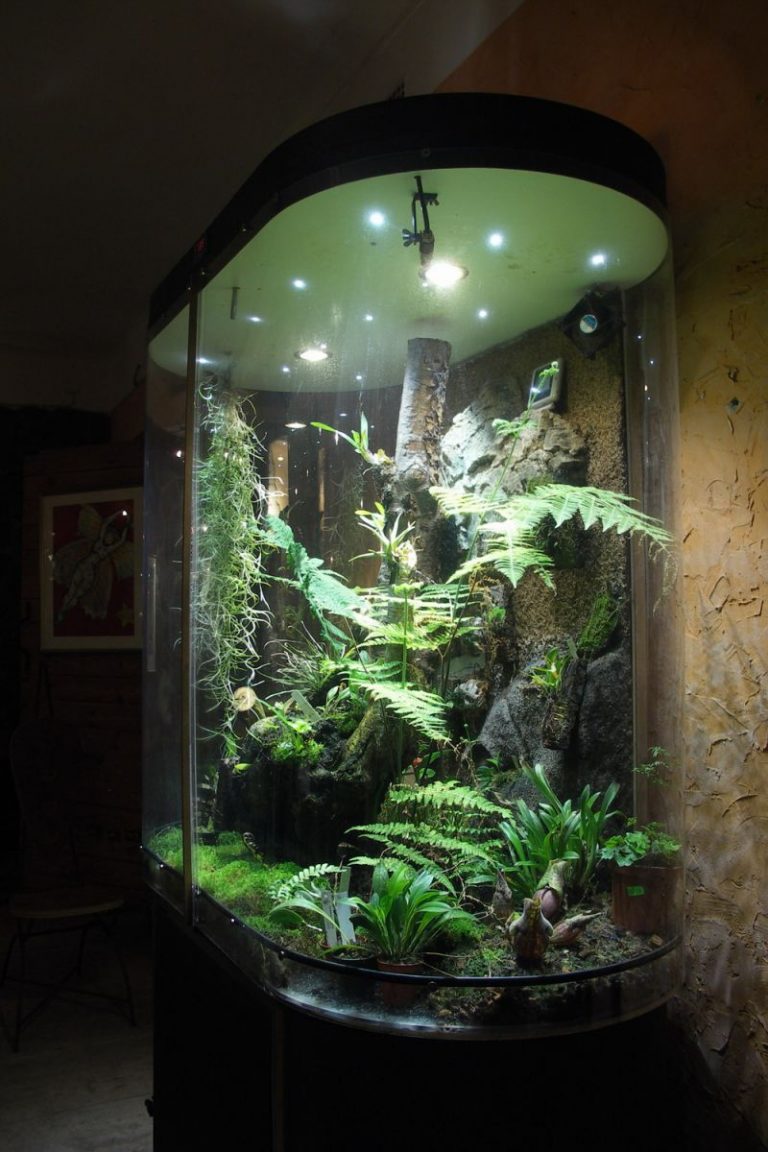




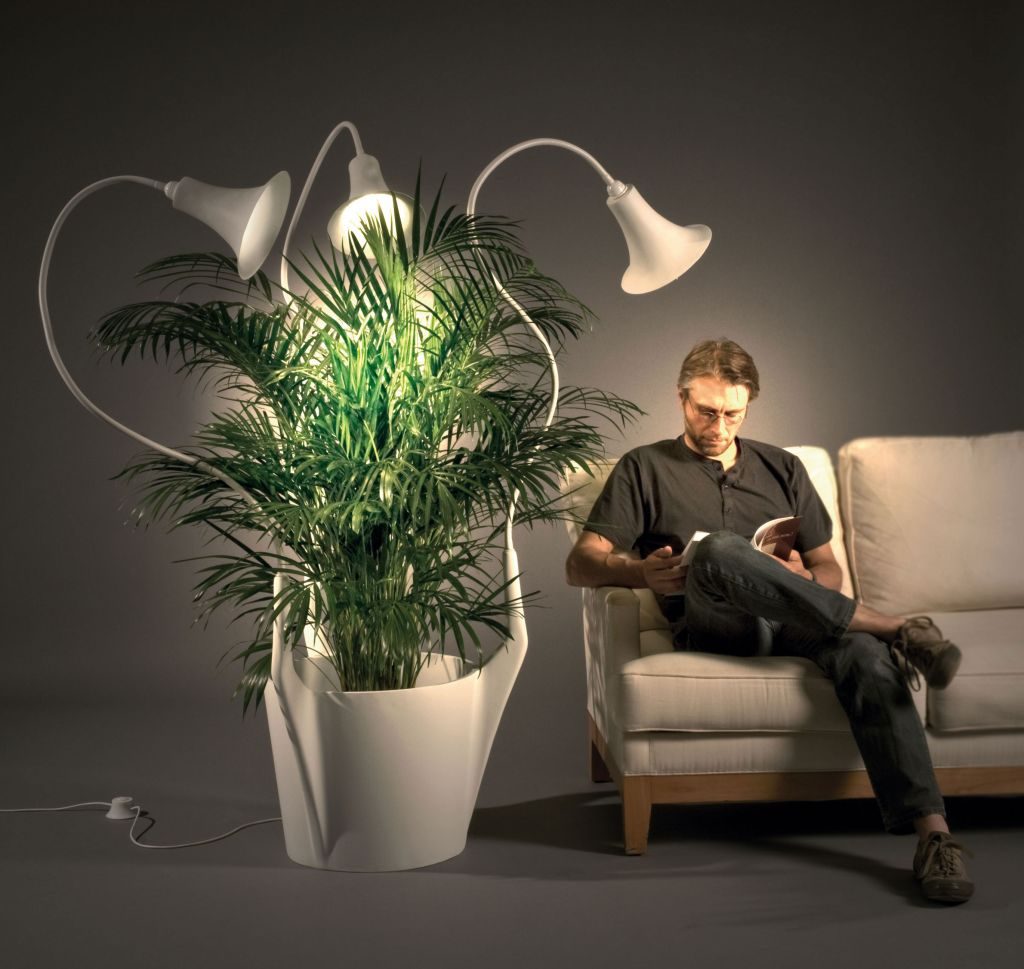
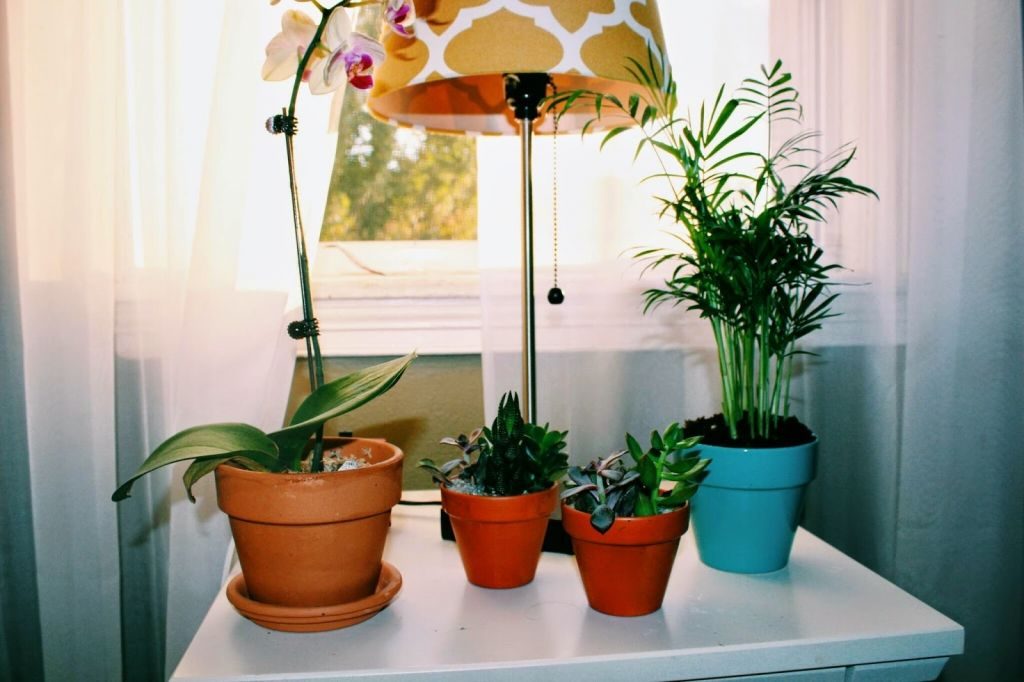
Every experienced gardener knows the huge role that properly selected lighting for indoor plants plays. Along with watering and soil, light is an indispensable component on which successful growth directly depends. It is no secret that in the natural environment, some plants thrive in shaded areas, while others cannot develop without direct exposure to sunlight. At home, the situation looks similar. Let's talk in detail about how to properly make artificial lighting for indoor plants.
Decorative lighting and lighting for plant growth
A lamp for growing indoor plants is a great way to extend daylight hours. After all, many indoor flowers are of tropical origin, which means they experience a daily lack of solar energy, especially in winter period. For effective plant growth, the daylight hours should be about 15 hours. Otherwise, they weaken, stop blooming and are susceptible to various diseases.
When planning the future illumination of indoor flowers, it is important not to miss the aesthetic component. The phytolight should become part of the interior, a unique decorative element. There are a huge number of lamps on sale with wall mount different shapes, for any energy-saving lamp: CFL or LED. Depending on the size of the home flower garden, lighting can be made from several spot lights aimed directly at each green pet, or from tubular fluorescent lamps with a reflector. Using your own imagination, you can make an original LED phytolight yourself.
The most important component of growth is the light spectrum
In order to understand how heterogeneous the light from different electrical sources and the sun is, you need to look at their spectral composition. The spectral characteristic is the dependence of the radiation intensity on the wavelength. The solar radiation curve is continuous throughout the visible range with a decrease in the UV and IR regions. The spectrum of artificial light sources in most cases is represented by individual pulses of different amplitudes, which as a result gives the light a certain hue.
During the experiments, it was found that for successful development, plants do not use the full spectrum, but only its individual parts. The following wavelengths are considered the most vital:
- 640–660 nm – velvety red color, necessary for all adult plants for reproductive development, as well as for strengthening the root system;
- 595–610 nm – orange color for flowering and fruit ripening;
- 440–445 nm – purple for vegetative development;
- 380–400 nm – near UV range to regulate the rate of growth and formation of proteins;
- 280–315 nm – mid-UV range to increase frost resistance.
Lighting with only the listed rays is not suitable for all plants. Each representative of the flora is unique in its “wave” preferences. This means that it is impossible to fully replace the sun's energy using lamps. But artificial lighting of plants in the morning and evening hours can significantly improve their life.
Signs of lack of light
There are a number of signs by which it is easy to identify a lack of light. You just need to take a close look at your flower and compare it with the standard. For example, find a similar view on the Internet. A clear lack of illumination manifests itself as follows. The plant slows down its growth. The new leaves are smaller and the stem becomes thinner. The lower leaves turn yellow. The flower either stops blooming completely, or the number of buds formed is less than the statistical average. It is assumed that watering, humidity and air temperature are normal.
How much light do you need?
It is impossible to give a definite answer to this question. How can a person live in different parts globe, so indoor flower can grow on a windowsill facing north, south, west or east. Throughout its life, the plant will strive to adapt to current conditions: stretch upward due to lack of light or, conversely, expose the next blossoming bud to the sun’s rays.
Watching appearance stems and leaves, the size and number of flowers, you can determine the adequacy of the lighting level. At the same time, do not forget about what stage of development the indoor flower is at: growing season, flowering, seed ripening. At each stage, it takes light from the sun of the wavelength that it needs at the moment. Therefore, when organizing additional lighting, it is important to take into account the qualitative component of the light flux.
Long-term exposure to bright light from the sun and lamps with an illumination level of more than 15 thousand lux is loved by those indoor flowers, which in their natural habitat grow in the open air. These are many people's favorite crassula, geranium, kalanchoe, and begonia. Artificial lighting for plants of this type V evening time will do them good.
Representatives of the flora that feel comfortable in illumination of 10–15 thousand lux include spathiphyllum, clivia, saintpaulia, tradescantia and dracaena. The leaves of these types of indoor flowers do not like hot sunlight, but also do not tolerate early twilight. That's why ideal place for them there will be a window sill with access to the west, where in the evening their leaves will receive the necessary energy from the setting sun.
So called shade-loving plants can bloom and develop away from window opening, being content with illumination of up to 10 thousand lux. However, this does not mean that they will die if they are placed in a brighter place. They just need less direct sunlight. These include some types of ficus and dracaena, philodendron, as well as tropical vines.
Supplementary lighting for plants and artificial lighting sources
In most cases, indoor plants need additional lighting. Flowers, which at first glance have bright green succulent leaves and bloom regularly, will look even better if they are exposed to a phytolamp. If someone thinks otherwise, then he has an excellent chance to be convinced of the error of his thinking and collect. To extend daylight hours, various sources of artificial light are used. Let's look at each of them and figure out which light is best for plants.
Incandescent lamps
 Illuminating plants with incandescent lamps is the least effective for several reasons. The emission spectrum of conventional light bulbs with a spiral is strongly red-shifted, which does not contribute to photosynthesis in any way. Low efficiency and, as a consequence, enormous heat generation drive their energy and light efficiency to zero. In addition, incandescent lamps have the shortest service life compared to other artificial light sources.
Illuminating plants with incandescent lamps is the least effective for several reasons. The emission spectrum of conventional light bulbs with a spiral is strongly red-shifted, which does not contribute to photosynthesis in any way. Low efficiency and, as a consequence, enormous heat generation drive their energy and light efficiency to zero. In addition, incandescent lamps have the shortest service life compared to other artificial light sources.
Fluorescent lamps
 Tubular fluorescent or, as they are most often called, energy-saving lamps daylight type T8 full spectrum (T=5300–6500°K) are considered the best option for illuminating indoor plants for many years. They have earned many positive reviews due to the presence of a selective spectrum, efficiency and low heat transfer combined with reasonable cost.
Tubular fluorescent or, as they are most often called, energy-saving lamps daylight type T8 full spectrum (T=5300–6500°K) are considered the best option for illuminating indoor plants for many years. They have earned many positive reviews due to the presence of a selective spectrum, efficiency and low heat transfer combined with reasonable cost.
Companies specializing in the production of fluorescent lamps offer plant growers an improved option - a phytolamp with a selective emission spectrum. They work predominantly in the blue and red range, as can be seen from the characteristic glow. But the cost of such lamps for illuminating plants is an order of magnitude higher than their conventional counterparts.
 A sodium lamp is the most efficient light source. In terms of luminous efficiency and working life, these lamps are comparable to LEDs for plants. But they are not suitable for home use due to their excessively high brightness (more than 15 thousand lux). But in many greenhouses and conservatories, growing plants under artificial lighting is based precisely on gas-discharge lamps. Due to the fact that they emit more red light, they are installed in combination with 6500K fluorescent lamps.
A sodium lamp is the most efficient light source. In terms of luminous efficiency and working life, these lamps are comparable to LEDs for plants. But they are not suitable for home use due to their excessively high brightness (more than 15 thousand lux). But in many greenhouses and conservatories, growing plants under artificial lighting is based precisely on gas-discharge lamps. Due to the fact that they emit more red light, they are installed in combination with 6500K fluorescent lamps.
LED light sources
 All LED phytolights are divided into three groups:
All LED phytolights are divided into three groups:
- bicolor;
- with multispectrum;
- with full spectrum.
Bicolor or two-color lamps are based on blue (440–450 nm) and red (640–660 nm) LEDs. Their light is considered to be the most optimal for organizing illumination of any plants during the growing season. This working spectrum favors the process of photosynthesis, which leads to accelerated growth of green mass. That is why summer residents prefer blue-red LED lamps when growing seedlings vegetable crops on the windowsill.
LED lamps with a multispectrum have wider application due to the expansion of the red range into the infrared and yellow light. They are in demand for illuminating adult plants, stimulating flowering and fruit ripening. In apartment conditions, it is better to use LED multispectrum for flowers with a dense crown.
A phytolight with a full spectrum of radiation can be used to illuminate flowers in an apartment, regardless of the type and location. This is a kind of universal source of artificial light that emits in wide range with maximums in the red and blue zones. LED lamp full spectrum is a tandem of energy efficiency and light energy reminiscent of the action of solar rays.
Today's creation favorable conditions for an extensive transition to phytoLEDs is not happening for two reasons:
- high cost of high-quality lamps for plants;
- a large number of fakes based on conventional LEDs.
What light is best for growth?
Of course, the ideal light source is solar energy. In apartments with windows facing southeast and southwest, you can grow any flowers, placing them in different parts of the room. But don’t be upset for those who only have a north-facing view from their window. Fluorescent and LED lamps for lighting plants compensate for the lack of sun rays.
Daylight lamps for plants are a budget option, time-tested. They are suitable for those who are trying to create normal conditions for a flower with little investment. LED phytolamps are for those who want to speed things up and achieve the best results in a short time, despite the price of several thousand rubles.
- Before purchasing another “leafy pet,” you should find out how light-loving it is. Perhaps the allocated space in the room will not be able to provide him with full development.
- An inexpensive option for illuminating light-loving plants can be made from an 18 W fluorescent lamp and a 25 W incandescent lamp.
- The prevailing radiation in the yellow region of the visible spectrum inhibits the growth of stems. Illumination of dracaena (and other tree-like plants) warm light will give it a compact shape.
- If a plant with variegated foliage loses its original color and becomes monochromatic, then it clearly does not have enough light. An LED phytolamp will help restore the flower to its former attractiveness.
- Light from red and blue LEDs accelerates eye fatigue. In this regard, visual work in the area of their action should be excluded.
Summing up
We hope that the material read helped the reader to acquire basic knowledge of organizing lighting for flowers in the house and on the balcony. Once again I would like to emphasize the efficiency and high efficiency LED lamps for growing plants, a mass transition to which is just around the corner. Let every gardener who has the opportunity to purchase an LED phyto-lamp today evaluate its power and leave his review for other readers in the comments below.
Read also 
In winter, the home garden needs sunlight more than ever. Daylight hours are becoming much shorter, and plants lack solar energy. They begin to wither and turn yellow, and there is no talk of flowering in winter. But the situation can be corrected thanks to artificial lighting. Flower growers resort to lighting - the only solution Problems. So, in winter you can achieve rapid growth of domestic plants, and even fruiting of some crops.
Saxifraga
Aspidistra
Light-loving crops are another matter. They do not develop well without sufficient lighting. Some species, often tropical ones, need bright sunlight. For some - absent-minded. Winter is a real disaster for such plants. If there is not enough light, you can forget about flowering and lush greenery. Therefore, the grower needs to install additional lighting. TO light-loving plants include:
These are just the most common indoor plants that love bright light. When purchasing a particular flower, always inquire about its light needs. This is very important, otherwise the plant may die if there is too little or too much light. Do not forget that only thanks to sunlight, a plant can, in principle, live and develop.
In fact, even shade-tolerant crops need indirect light. In winter it will never be superfluous. The main thing is to choose the right phytolamp and install it in the right place.

The answer to this question would seem unequivocal – sunny. But it is not so. Vegetable world perceives sunlight in a completely different way, not the way a person does.
Flowers need the red, orange, blue and violet spectrum to develop and grow normally.
As you can see, not all colors from the sun's rays are perceived by plants. Therefore, the backlight will emit exactly these spectra that the plants need.
Thanks to red and orange light, the process of photosynthesis is launched, without which the plant’s existence is impossible. Blue and violet spectra are necessary for growth and its regulation. Experienced gardeners know that for the germination of seeds and the development of young sprouts, red and orange light is needed. For already formed plants - mixed or blue, violet light. Having figured out what kind of light the plants need, you can choose a lamp.

Garden centers or specialty lighting stores will offer a wide range of lamps for plants. An inexperienced gardener may be confused by this choice. First of all, you should understand once and for all that an ordinary Ilyich light bulb is not suitable for illuminating plants. You need to choose either fluorescent, gas-discharge, or LED lamps:
- Fluorescent lamps. This type of lamp is perhaps the most common among gardeners. Fluorescent lamps are inexpensive and provide the necessary light to plants. They serve for quite a long time, they are convenient to place above the home garden. Some types of crops, such as Saintpaulia, bloom under these lamps in winter. The emitted spectrum is red and blue. If you want to choose these lamps, keep in mind that they are not suitable for tall plants (more than 1 meter). There won't be enough of them. The best-selling types of fluorescent lamps for plants are the Osram brand, Fluora.
- Gas discharge lamps. In this category of lamps there are three groups - mercury, metal halide and sodium lamps. The best of them are considered to be metal halide backlights. They emit all spectrums of sunlight necessary for plants. Sodium lamps are more suitable for young sprouts as they emit red and orange light. Mercury vapor lamps not recommended for installation. Generally gas discharge lamps it is more advisable to install in large rooms - greenhouses, conservatories or large winter gardens. For home use It is better to choose a fluorescent lamp.
- LED bulbs. LED lamps are the latest development in the world of lighting devices. These lamps are perfect in every way. They are super economical, emit the entire spectrum of light necessary for plants and have sufficient power. These lamps have one drawback - high cost. Although, by purchasing a set of such lamps, you no longer have to worry about replacing them in the future. The lamps last so long that the savings from such a purchase will be quite noticeable.
- Reflectors and reflectors. Along with the main lighting, it is customary to install reflectors. Thus, the emitted light is not scattered, it is reflected from the reflector and spreads to the plants. You don't have to buy reflectors. They can be replaced by white, matte Whatman paper or food foil, its matte side. Often gardeners install such reflectors on window sills; as a result, sunlight is not scattered and plants receive much more light than without a reflector.
If you decide to install a fluorescent lamp, you will also need a reflector. The gardener will achieve an even distribution of light in his home garden.
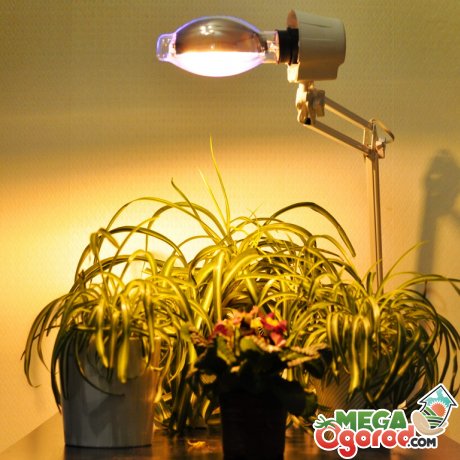
It is very important not only to choose the right lamp, but also to install it correctly. Many novice flower growers make the same mistake - hanging the lamps too high. More often, lamps should be hung at a distance of 25-30 cm from the topmost leaves. For shade-tolerant plants lamps are placed at a distance of 40 cm. The lamp should be located strictly above the plant, and not on the side or below.
In addition to the lamps, install reflectors according to different sides from the flowerpots so that the height of the reflector fully matches the height of the plants and is slightly higher than them.
If the plant is located on a windowsill, place reflectors on all sides, including the space on the side of the room. Mirrors cannot be used as reflectors, as they do not reflect, but absorb light. Therefore, they will be of no use.
Try to follow these simple rules and there will be enough light for plants. The backlight time is also important. You cannot turn on the lamps and leave them for a day. Develop a regime according to the needs of the flowers. Turn on the lamp 2 hours before dawn, then it can be turned on when dusk falls. In total, flowers need 10-12 hours of daylight. Add to the main, natural daylight hours the number of hours that together would make the number 12. Usually this is two hours before dawn and two or three after sunset. Thus, the lamp will work for a maximum of 5 hours a day in winter.
More information can be found in the video:
Tips for flower growers:
- When installing a lamp, always keep in mind that as the plant grows you will have to lift it lighting fixture higher. Install lamps on special holders whose height can be adjusted.
- From experience, gardeners can determine the approximate number of lamps per plant, depending on its type. So, for citrus fruits, philodendrons and monsteras, one fluorescent lamp 60 cm in size + installation of reflectors will be enough. For tall plants, more than one meter in height, you will need two fluorescent lamps, more than 1 meter in size + reflectors.
- Do not forget that the distance between the plant and the lamps for tall crops is 40 cm, no less. The distance between the lamps themselves is at least 30 cm.
- If you have a large greenhouse, install different types lamps This way the plants will certainly receive the required radiation spectrum.
- If we are talking about growing vegetables at home, then your arsenal should include sodium lamps and fluorescent lamps. The first are needed to illuminate young shoots, the second - for the growth of mature plants.
There is nothing complicated in installation, the main thing is to take into account all the nuances and follow the advice experienced flower growers and vegetable growers. Don't forget about your pets in winter, give them the most important thing for their life and development - light!




